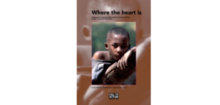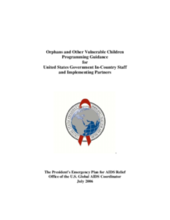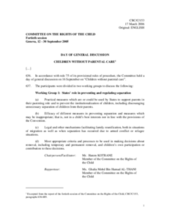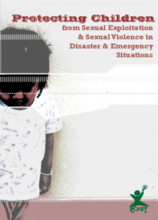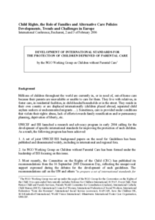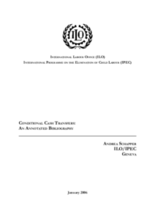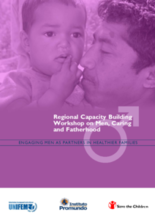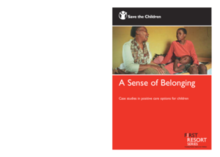Displaying 4021 - 4030 of 4349
Practical and professional paperwork for residential care including registration and assessment forms, application for renewal of licences, referral forms, and emergency admission forms. Can be modified for different country contexts.
The Joint Learning Initiative on Children and HIV/AIDS (JLICA) engages practitioners, policymakers, and scholars in collaborative problem-solving, research, and analysis to address the needs of children living in the context of HIV/AIDS.
This document presents a call to action to meet the needs of children affected by HIV/AIDS throughout the world.
The US President’s Emergency Plan for AIDS Relief
The Committee on the Rights of the Child held a day of general discussion on 16 September on “Children without parental care”.
A practical guide for local and communtiy based organizations about how to protect children from sexual abuse and exploitation in disaster and emergency situations.
Presentation on the UN Guidelines on Alternative Care of Children.
This document contains a bibliography global conditional cash transfer documents.
This report captures the discussions and activities from a workshop held in Kathmandu, Nepal on 17-19 October 2005 on engaging men as caregivers. The report presents a background and rationale, the expectations and objectives of the workshop, and an overview of work being done to engage fathers both in the region as well as globally.
Save the Children's "First Resort" series focuses on the needs and rights of children who, for a wide variety of reasons, are lacking adequate parental care. This third paper in the First Resort series presents practical examples of the range of options available to policy-makers, practitioners and others with responsibilities for the care and protection of children without adequate parental care.

